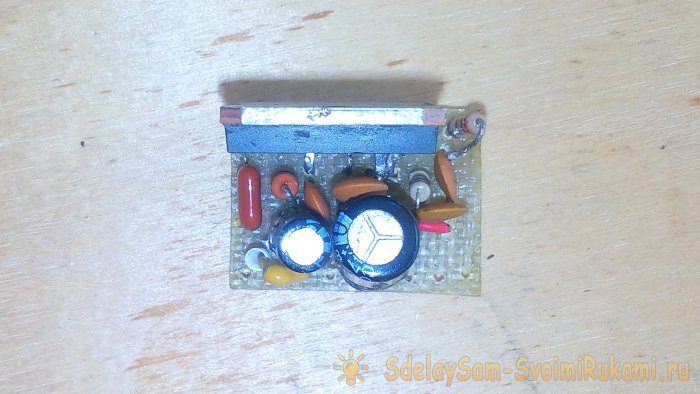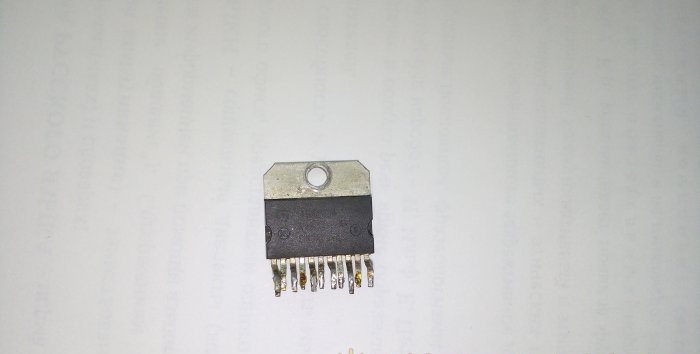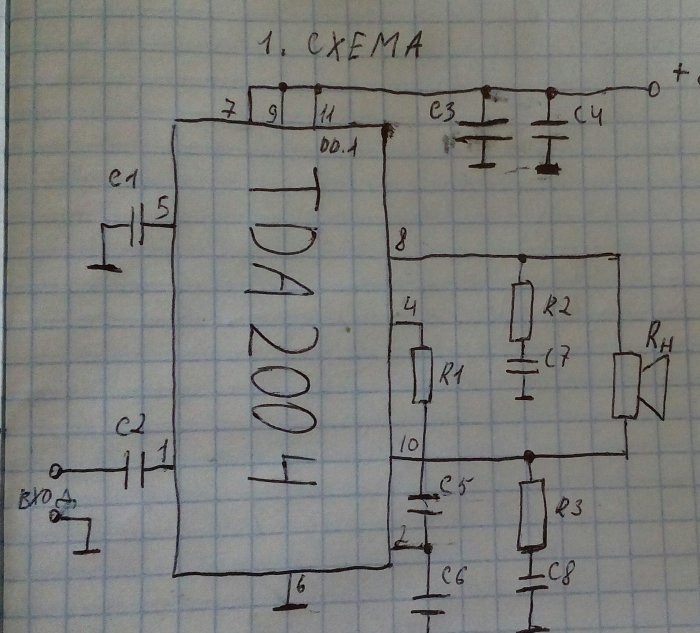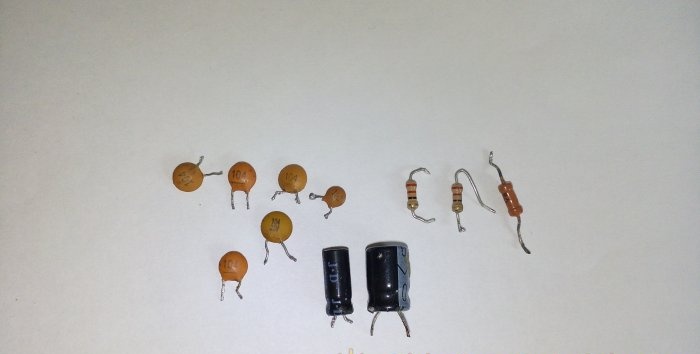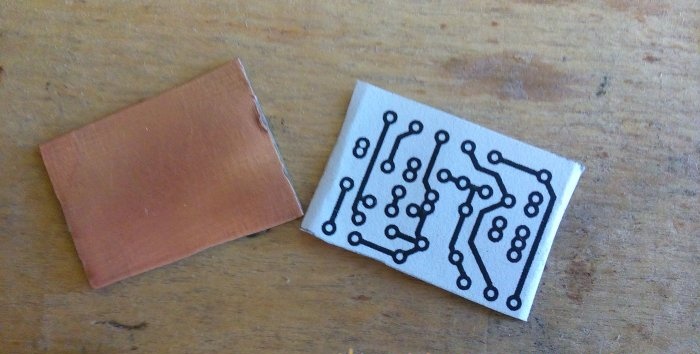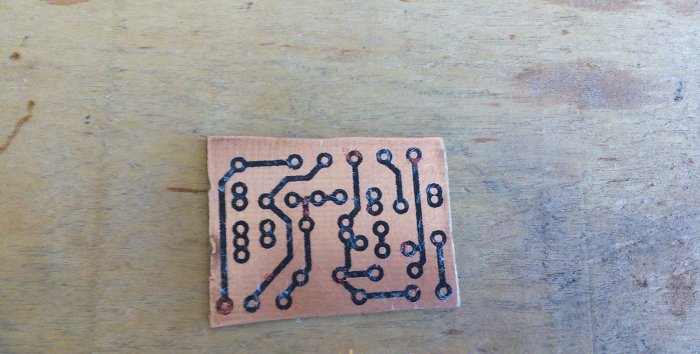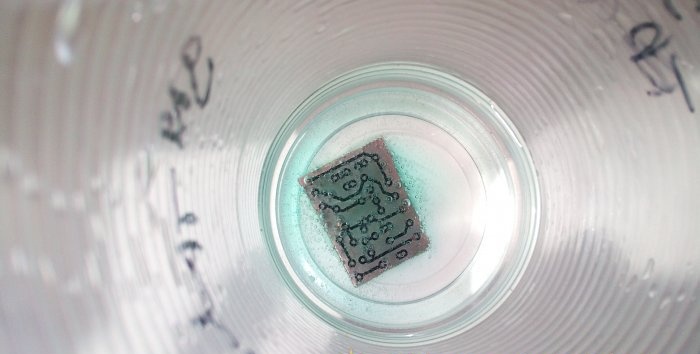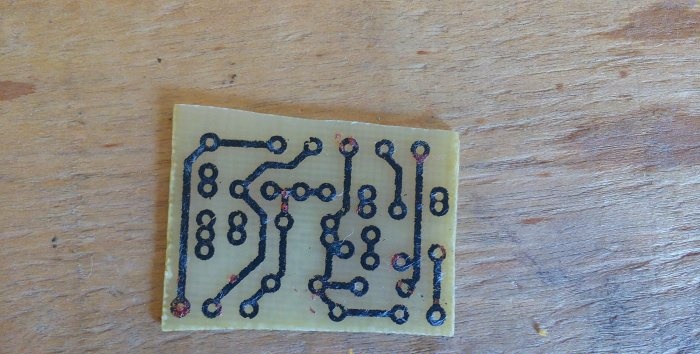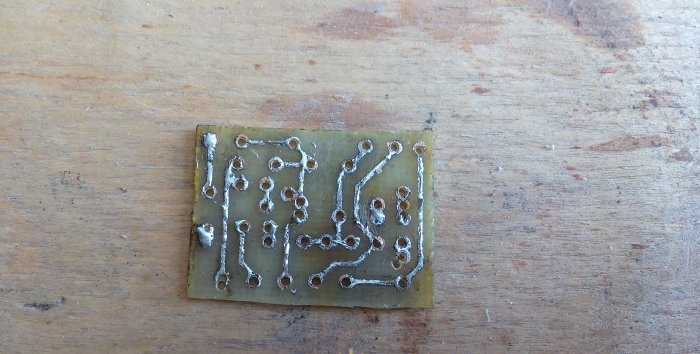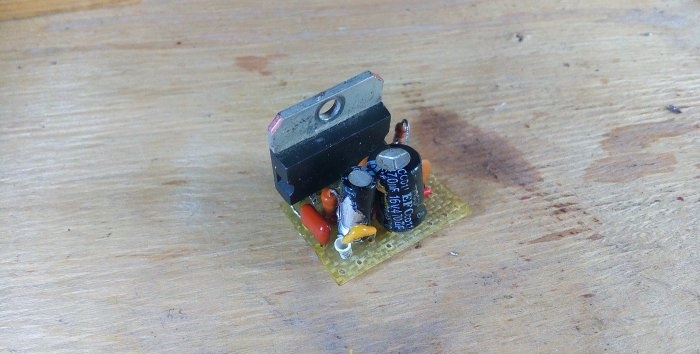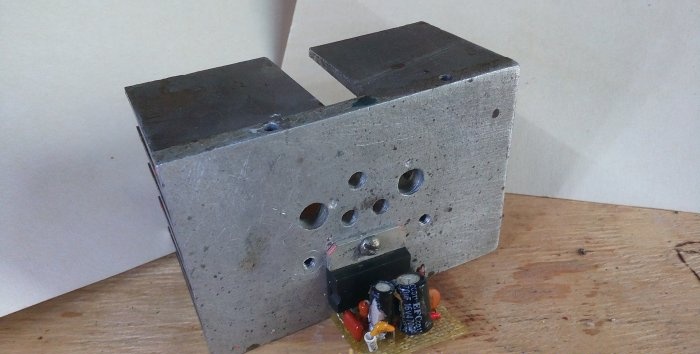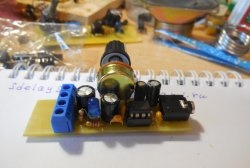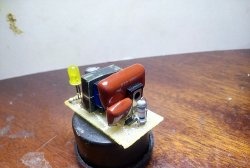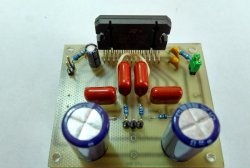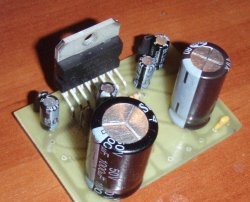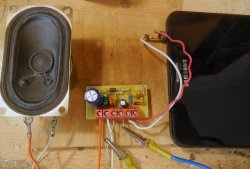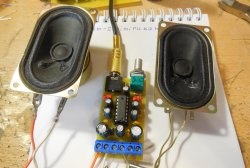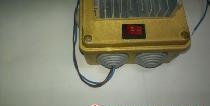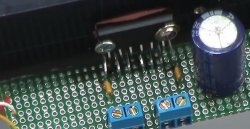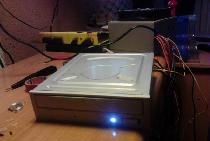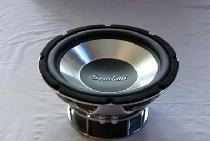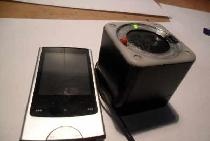Compact ULF 20 Watt
Good afternoon Now we will assemble a low frequency amplifier. The TDA2004 microcircuit is taken as the basis.
It has two outputs, but the power of each individually is 8 watts, which is not so much. Therefore, we will use bridging. This inclusion will more than double the power.
Amplifier Specifications
So, the main characteristics of our amplifier:
- Supply voltage: 8-18 volts;
- Rated output power: 20 Watt;
- Maximum output power: 25 Watt.
The diagram looks like this:
Required Parts
- DD.1 – TDA2004;
- C1, C2, C3, C7, C8 – 0.1 µF;
- C4 – 470 uF, 25 Volts;
- C5 – 10 µF;
- C6 – 1 nF;
- R1 – 470 Ohm;
- R2, R3 – 22 Ohm.
Printed circuit board
For the printed circuit board we will need a piece of PCB measuring 3x2 cm, as well as a drawing of the board:
pp.zip
[33.05 Kb] (downloads: 486)
Making a low frequency amplifier
We cut and transfer using the laser-iron method. We finish painting everything that has not been completely transferred with varnish.
We will etch in a solution of hydrogen peroxide and citric acid.Pour three tablespoons of peroxide into a large disposable glass, add a tablespoon of citric acid and add a pinch of ordinary salt, it is a catalyst and is not consumed during the reaction. Stir the solution until the substances are completely dissolved and throw the board into it. Hydrogen bubbles begin to be released, and the solution turns blue.
The board is etched for about half an hour. You can speed up the process a little by placing the solution in the sun.
When the excess copper has dissolved, take out the board and rinse it with water.
The used solution should be poured into the public sewer.
Next, we clean the board from toner with acetone and tin the tracks.
First, we solder the microcircuit into place, then the remaining components.
Carry out installation based on the picture:
At this stage the amplifier is ready. Before turning on, the microcircuit should be installed on a heat sink.
This is a compact but quite powerful amplifier. I connected a 25 Watt 4 Ohm low-frequency head to it - it did an excellent job, at full volume there were no wheezes, clicks or other sound distortions. After an hour of operation, the radiator heated up to 60 degrees.
And with this my article has come to an end, good luck to everyone in the repetition!
Similar master classes
Particularly interesting
Comments (5)

